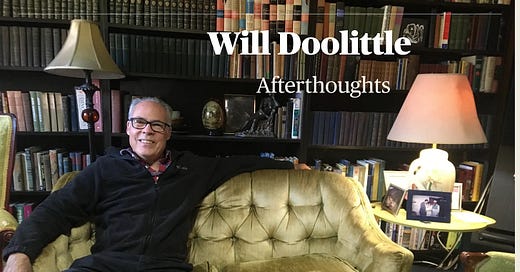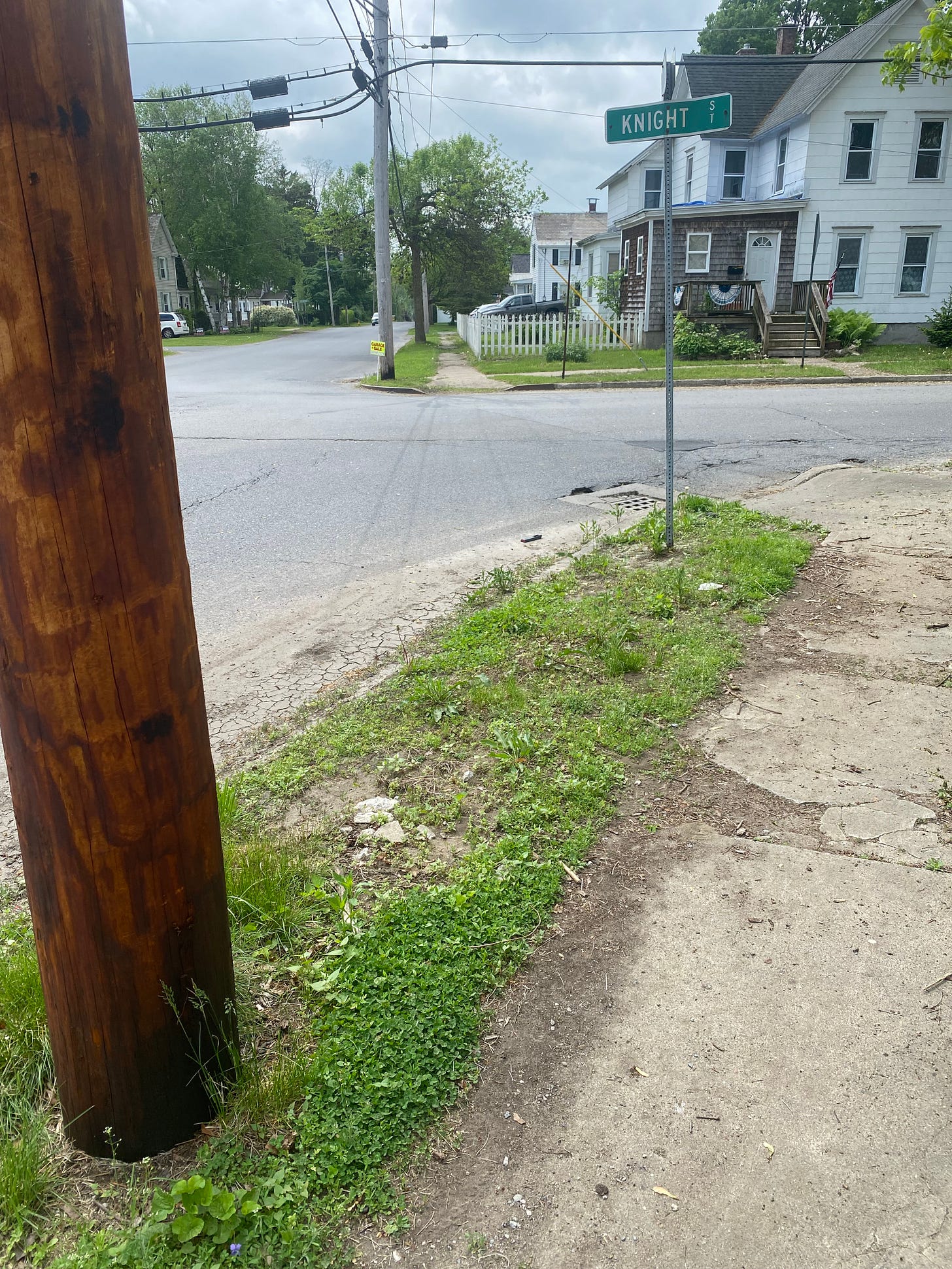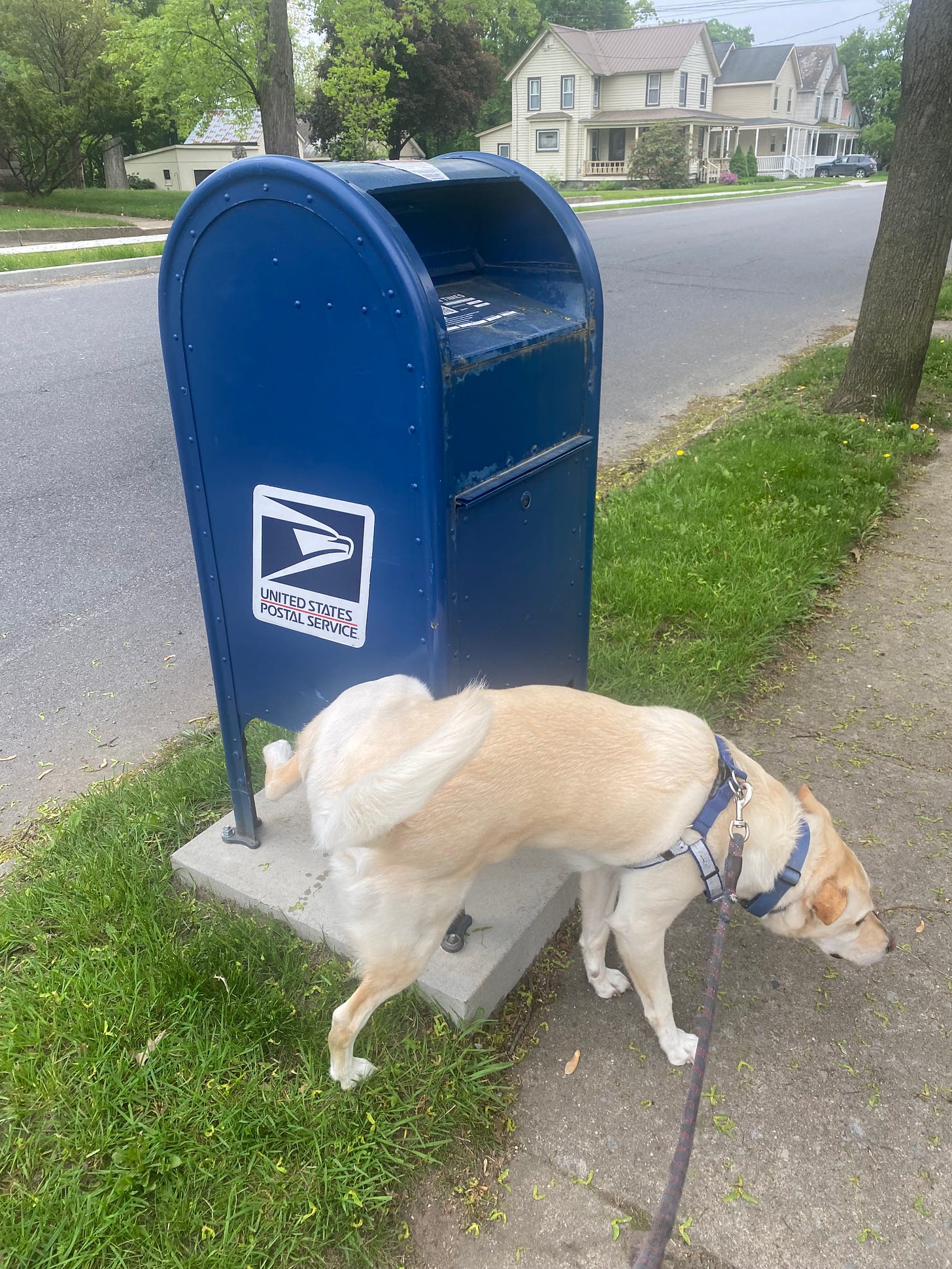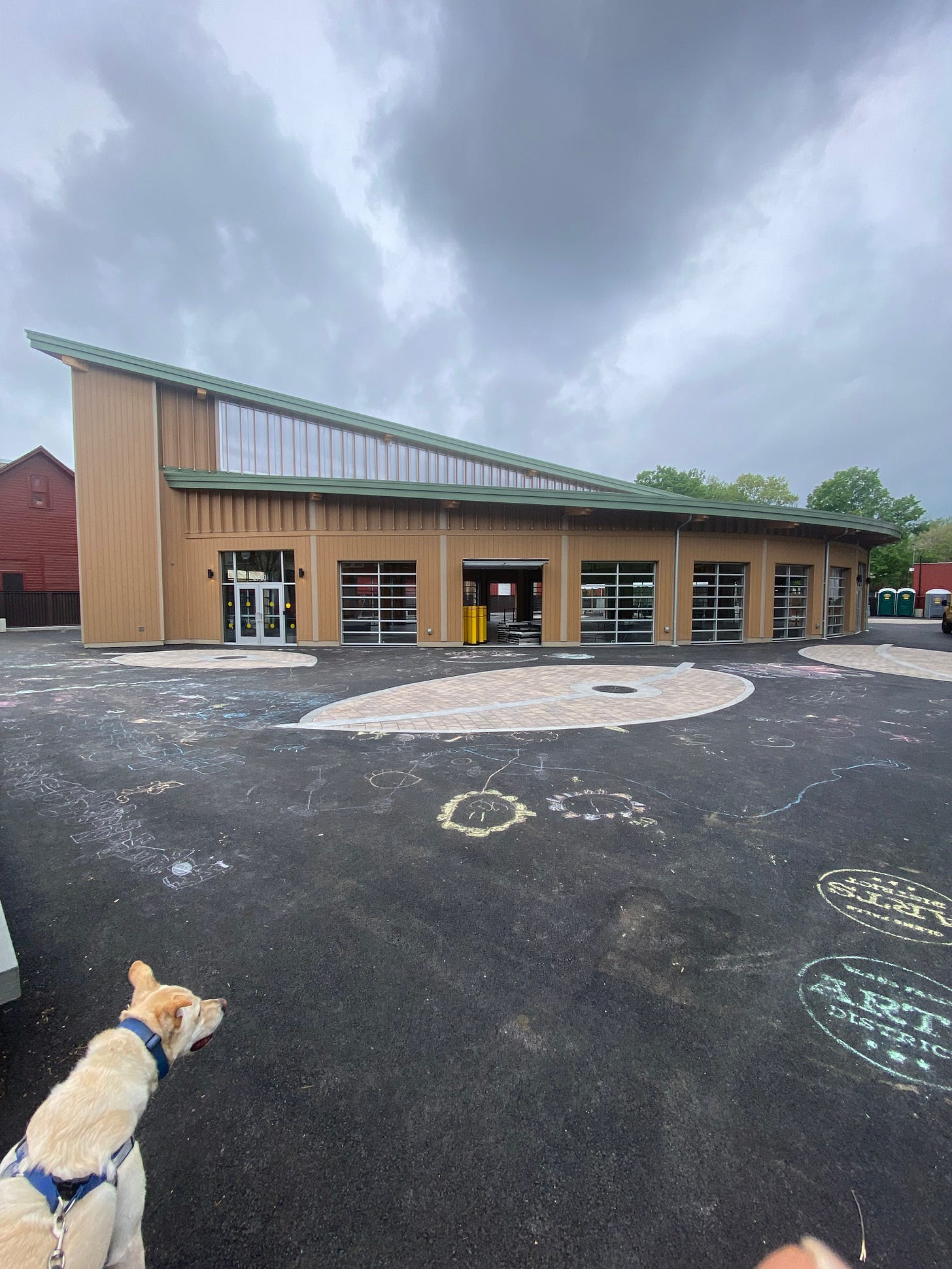Put solar in Pataki's back yard
Lugging bags full of news was good for us
Please consider supporting The Front Page with a paid subscription: HERE
A recent essay from New York’s former governor, George Pataki, argues that solar energy is great, unless the panels are being sited in the lovely lakeshore town where you’ve retired, in which case solar is unsuitable.
The governor’s essay appeared May 4 in the Adirondack Almanack, which is owned by the Adirondack Explorer.
Here is the essay’s first sentence:
“When the Adirondack Park was created, it was easy to see who the ‘bad guys’ were: garish signs, ugly motels, or intrusive cabins located right on the shore of environmentally important ponds or lakes.”
It sounds like he believes in a hierarchy of environmental importance among ponds and lakes.
I’ve always thought the APA was created to prevent large-scale development of beautiful, natural areas, not to fight roadside development of garish signs and ugly motels, circa 1955. Someone should tell the governor that most of those little motels and cabins along Route 9 were driven out of business decades ago by construction of the Northway.
Pataki says he supports solar and wind energy development. They have a “critical role to play,” he says. He is a “proponent of these important energy sources.”
But “location and timing,” he says, are “critical.”
The location we’re talking about is Essex, the town where Pataki’s house is located; the timing is now, which means it coincides with his retirement. Is that the problem?
His disdain extends beyond garish motel signs. He doesn’t want to see the gleam from a solar panel either.
“The power plant will be visible as one takes the magnificent ride from the intersection of Middle Road down Route 22 to the hamlet with open spaces, Lake Champlain and the mountains of Vermont in the viewshed,” he writes.
I have to ask: What is the difference between a viewshed and a view?
Also, what makes the sight of solar panels offensive?
Recently, Greg Brownell, the Post-Star’s former longtime sports editor, took to the road for an American travelogue. He stopped in New Mexico to see the Very Large Array, which comprises 28 enormous white antennae that can be moved on rails and function together as a powerful radio telescope.
The Very Large Array is breathtaking in the same way as the Hoover Dam and the Golden Gate Bridge — impressive in design and purpose, awe-inspiring in scale.
Scores of solar panels in a field, gleaming in the sun, can also be an impressive sight.
Unless we’re going to return to living in huts dug into the sides of hills, we need to generate energy somehow and somewhere. Harvesting sunlight in remote Adirondack fields seems ideal.
The size of the project the governor calls “a utility scale development” is 22 acres, which isn’t much in a park that, at 6 million acres, is about the size of Vermont.
A row of solar panels on your roof is fine but insufficient. To tackle climate change, we need to make our green energy installations industrial-sized.
The governor speaks highly of farming and advocates preserving even unused Adirondack farmland. But farming, too, involves clearing land and erecting fences.
Farming, too, creates waste and pollution, and farming can be noisy and smelly, which solar panels are not.
I’m in favor of farming, but the point is, all human activity affects the rest of the natural world, usually for the worse. Every method of energy generation has an environmental cost. If solar panels impinge on our viewshed, we’ll survive, and so will the wilderness.

Farewell, paperboys
It was exciting in 1973, when I was 12, to have my pockets swollen with change and a couple of crumpled dollars.
The Adirondack Daily Enterprise cost 15 cents, and it was published each weekday, but instead of paying 75 cents a week on the newsstand, subscribers could get home delivery for a discounted price — 60 cents, I think.
Friday was collection day, and we paperboys and girls carried around a book of thin cardboard receipts, perforated for easy tearing. We exchanged them with customers for quarters and dimes and nickels or, on occasion, a prized dollar bill.
We kept the tips and a certain amount, maybe a dime, per paper. Looked at coldly, this was exploitation of child labor.
But for a 12-year-old, handling money and taking some home were thrills. Also, a comic book cost 20 cents in 1973 and a bottle of coca-cola 10, so earning a few bucks a week wasn’t bad.
I was the son of the publisher but had one of the longest routes, out of the village of Saranac Lake a mile and a half to the neighborhoods around the hospital. I rode my bike in the summer but in winter had to walk.
Years later, my daughter Ginny was trudging through snow in a different Saranac Lake neighborhood to stick papers in tubes and wedge them in screen doors.
No more 12-year-olds will be signing up for this rite of passage, however, since New York just banned the employment of paperboys and girls under 14. But no papers in New York and few anywhere in the country employ kids as deliverers now anyway.
Millions of us in middle age and beyond share this experience of the challenges and responsibilities of bringing people their daily paper. We were part of the web of workers, from the pressroom to the ad department to the newsroom, that kept people informed about what was happening in their community.
These jobs are vanishing, and so is that information. The void gets filled mostly with trash — sometimes diverting, sometimes enraging.
It’s not a tragedy that kids have to find something else to do besides trudge through snow with a bag full of papers. But it is a tragedy that so many of us don’t know what’s going on and so much of what we think we know is wrong.
Dog-gone mailbox
I’m a fan of our national postal service. But a few weeks ago, I had a surprisingly confrontational interaction with a mailman who had had enough of getting barked at by our dog, Ringo.
Ringo does bark when he sees the mailman coming, and even though we’ve put our box on its own posts outside our fence, next to the driveway, the mailman does not appreciate the attention.
Making things worse was the location of a blue drop box on the corner we live on, which meant a second bout of barking for the beleaguered mailman, if he happened to be emptying the box when Ringo was out.
Things escalated alarmingly a few weeks ago when Bella and I and Ringo were heading out to the car at the same time as the mailman was approaching our house. Ringo is good about going to the car and jumping in the back himself, which helps, because I have to attend to Bella, who has Alzheimer’s disease and needs assistance getting in.
But Ringo is curious by nature, and he had started trotting first to the end of the driveway and looking down the sidewalk, before coming back and jumping in the car. One time, the mailman was right there. Ringo just looked at him, not barking, but the mailman stopped and asked me to get ahold of the dog, which I did.
The second time it happened, the mailman got mad and crossed the road.
“You just can’t leash your dog, can you?” he said. “I’m skipping you today, and you can pick your mail up at the post office from now on.”
I got Ringo and Bella in the car, then chased after him.
“Do you know how many dogs I have to deal with?” he said. “I’m not going to play Russian roulette with your dog.”
He seemed very stressed, and he did have a point. Risking a bite is not part of his job description.
I apologized, and he gave me that day’s mail and agreed to give us one last chance to keep Ringo on a leash . Then he said the surprising thing.
“That drop box is getting moved because of your dog,” he said.
I sputtered something about the fence, but I wasn’t terribly upset. I like the convenience of having the box on the corner, but it’s not as if it was put there for my benefit.
It did seem a waste of time and money to move it, but I figured it wouldn’t happen. Then, on Saturday, I noticed it had happened.
The Leaf
Since leaves are the leitmotif of the new Market and Event Center, I suggest we start calling it “The Leaf.” Bella and Ringo and I missed the block party on Friday that celebrated the Leaf’s opening, but we stopped in on Saturday. It looks great.









"A recent essay from New York’s former governor, George Pataki, argues that solar energy is great, unless the panels are being sited in the lovely lakeshore town where you’ve retired, in which case solar is unsuitable."
This public policy issue perfectly demonstrates, in my mind, the tension between two environmental objectives: one, facilitate energy production that’s sustainable and renewable, reducing carbon emissions and two, conservation of our natural resources to prevent exploitation, destruction, and neglect.
Both sides of the issue have legitimate concerns. For me, the question is not which side is right, but rather, is there a consensus or compromise that can be achieved to facilitate both objectives?
I think to do that, both sides need to be open to finding a middle ground instead of standing resolutely on their own side.
I too was a paperboy…and “Carrier of the Month” twice. Was a terrific experience and taught many valuable life lessons about responsibility and accountability. I loved having and saving money and the independence that brought. Not bad for 12-13 years old.